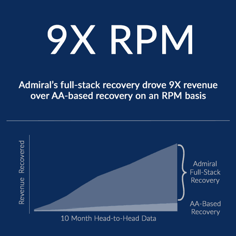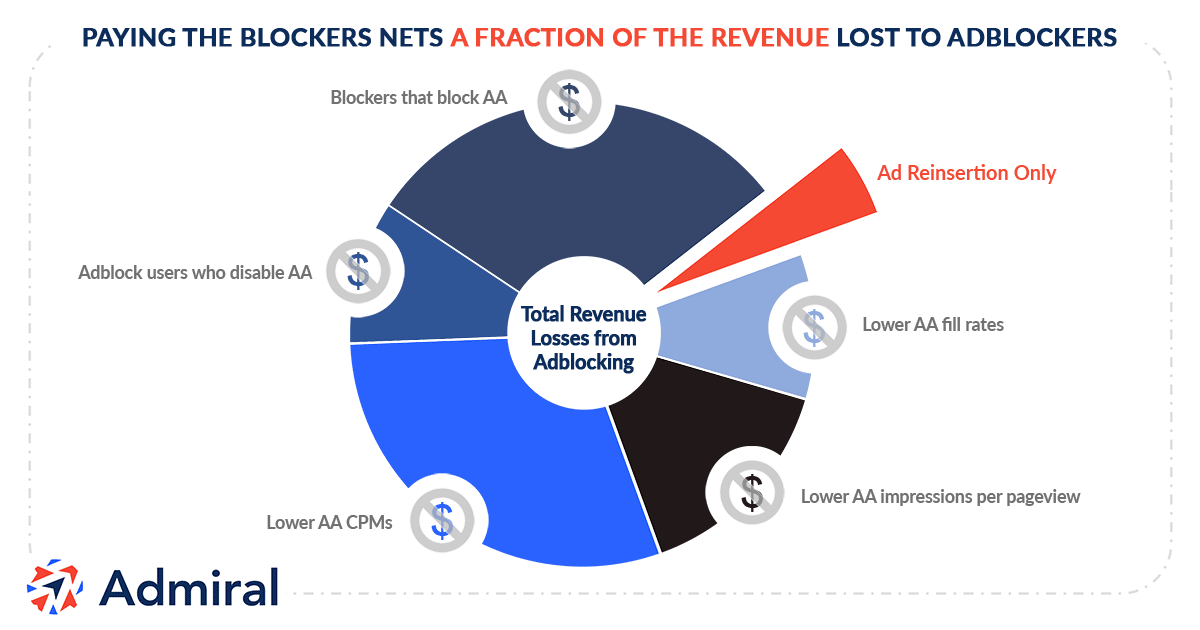The Acceptable Ads program, launched by the developers of Adblock Plus: what is it and how can digital publishers benefit?
On the one hand, the digital ad industry is ripe for change and innovation to balance user preference with ad-sponsored content, but on the other, it is quite controversial — for users and publishers — to have an ad program owned by the largest adblocking company.
There are questions from all corners, privacy advocates, ad networks, publishers, and consumers. Publishers need to be mindful that the Acceptable Ads program comes with some baggage, but consent-based ad-lite experiences could be one piece of an overall solution that respects visitors and funds great content.
What are Acceptable Ads?
Acceptable ads is a term representing digital ads that conform to a specific set of criteria to address consumer complaints about annoying and intrusive online advertising. The term is also used to describe the Acceptable Ads initiative which also sets forth processes by which online publishers can choose to deliver only ads qualifying under the criteria. Adblock user survey's have shown repeatedly that many adblock users are willing to view ads that not annoying or intrusive, and they support a publisher's right to be compensated for content.
Innovation in ad tech and delivery led to an ad experience that many consumers felt was invasive, annoying, and a threat to privacy. All of the control was in the hands of the ad industry and publishers, not the user themselves. Adblock technology adoption soared as a result, and this in turn threatened the ad-sponsored “free content" model that most publishers rely on for revenue.
Eyeo GmbH, the creators of Adblock Plus, created a new marketplace to balance ad delivery with user choice, dubbed Acceptable Ads. The Acceptable Ads program established a set of criteria for ads that are deemed to be less invasive and annoying, and a method for publishers and advertisers to have ads approved for delivery to Adblock Plus users.
According to Eyeo, this provides an acceptable compromise between publishers, brands, and consumers. Acceptable Ads are enabled by default for new Adblock users, but individuals can choose to disable the feature, thus blocking all ads. EyeO continued to purchase additional companies in the adblock ecosystem, which all support Acceptable Ads: Adblock, AdblockPlus, uBlock, Blockthrough, AAX, and Flattr among others.
What are the criteria for Acceptable Ads?
The independent Acceptable Ads Committee (AAC) states the following general guidelines from which specific criteria are determined:
- Ads should not be annoying in quality or number
- Ads should not block the view of page content.
- Should be distinguishable as an ad, and
- Appropriate to the site they are on
Specific criteria are spelled out, though they can change over time. Categories include:
- Placement: Top, bottom, or side, but not embedded in the middle of primary page content
- Size: Sizes are specific to the placement area, and cannot account for more than 15% of the space above the fold, nor more than 25% below the fold.
- Labeled: ads should be labeled as “advertisement” or similar text, to be distinguishable from other content.
- Ad types and behavior: there is a list of ad types that are not currently acceptably, including animated ads, expanding ads, pop-ups, overlays, and rich media.
Who determines the Acceptable Ads criteria?
In 2017, Eyeo GmbH turned control over the Acceptable Ads initiative to the independent Acceptable Ads Committee (AAC) comprised of advocates from three groups: User Advocates, For Profit advertisers and publishers, and Technical/Academic Experts. According to Eyeo, the committee is a *politically neutral body, that conducts research, gathers feedback from adblock users, and deliberates the impact on all parties in the digital ad ecosystem before issuing new criteria changes. (Full disclosure: For years the AA committee was headed by the CEO of Blockthrough, which was based selling AA and eventually purchased by Eyeo)
What should publishers consider when vetting an Acceptable Ads initiative?
The Acceptable Ads program could provide a net-positive recovery minimum to balance publisher and consumer needs. The program has gained adoption by multiple adblocking platforms, each with pros and cons. When vetting an adblock revenue recovery solution that leverages an Acceptable Ads Exchange (AAX), publishers should consider the following:
- CPM rate impacts,
- potential ad fraud with new delivery methods and vendors,
- it's limited to only some adblock users, and then only those that opt-in to see ads,
- platform dependency,
- some valuable ad formats, such as video, are not supported,
- the impact of whitelisting campaigns to serve the full ad stack to former adblockers, and
- Overall average Revenue Per 1000 page views (RPM), since AA limits the number and format of ads per page.
"Right now, the CPM of an Acceptable Ads user is 30% less than the average CPM," states EyeO CEO Frank Einecke.
What percent of visitors can be monetized by Acceptable Ads?
Each website and audience will have its split between adblockers vs non, and of those former, those that may view Acceptable Ads. However, it will never add up to the total losses due to the impact of adblock on a publisher. Publishers need to recognize that monetization via Acceptable Ads is based on a fraction of the potential adblock losses.
Monetization from AA nets a fraction of fractions, due to the following factors:
- visitor must be using an adblocker that participates in AA (many do not),
- visitor must have chosen to allow AA ads to be shown,
- CPM's for AA are 30% lower than publisher's full stack
- Lower ad impressions per page view due to ad quantity limits of AA
- Lower fill rates for AA ads
Note: Admiral does not discourage publishers from leveraging AA, in fact we offer it! However, we encourage publishers to leverage multiple adblock recovery methods to maximize their revenue recovery, which is why we offer a proprietary combination solution.
Can Acceptable Ads have Lower CPM?
Ad Premiums May be Lower: Dynamic and interactive ads can support higher premiums and drive greater engagement vs static ads. Therefore, the ‘watering down’ necessary for ads to be approved as Acceptable Ads can lower average ad premiums.
"Right now, the CPM of an Acceptable Ads user is 30% less than the average CPM," states EyeO CEO Frank Einecke.
 There have been multiple tests of publishers running Acceptable Ads, and then adding Admiral's full-stack allowlisting model. Check out this adblock recovery case study delivering revenue improvements as high as 9X on an RPM basis.
There have been multiple tests of publishers running Acceptable Ads, and then adding Admiral's full-stack allowlisting model. Check out this adblock recovery case study delivering revenue improvements as high as 9X on an RPM basis.
Publishers should plan accordingly, and continue to provide opportunities for adblock users to switch to a subscription model or whitelist the site for all ads. Ideally, using a single platform to manage multiple user options, such as re-insertion, whitelisting, subscriptions, or sponsorships, can help mitigate the drop in premiums. Admiral provides 1-Click Allowlist® for adblockers, which can triple recovery rates and eliminate the speed bump of users unsure of "how to whitelist adblock".
Is there potential for ad fraud with some acceptable ads solutions?
Potential for Ad Fraud: Some anti-adblock platforms have used the Acceptable Ads program as cover to leverage otherwise unacceptable ads that were dynamic or rich media. By making a static copy of a dynamic ad to claim AA compliance — even when the static copy may result in a blank image, transition, or zero mention of the advertiser -- these anti-ad blocking approaches may charge advertisers a higher rate than dynamic ads typically demand, but deliver a static, sub-optimal image that should be priced at a lower rate or not shown at all. If considering an ad re-insertion solution, publishers should vet their anti-adblock providers to ensure they are not charging premium prices for altered/static ad impressions, putting publisher reputation and revenue at clawback risk with advertisers.
Will visitors still block ads if I support acceptable ads?
Many ads will still be blocked: Not only can individuals disable the Acceptable Ads feature, but there are dozens of adblock technologies on the market that do not support the Acceptable Ads approach. Thus, publishers should still build direct relationships with their visitors, offering a choice of ad-lite experiences, whitelisting, subscriptions, or other steps forward in the relationship journey.
Does the Acceptable Ads program help fund adblock innovation?
Platform dependency: Just as pubs have been burned by platform reliance on Google search or Facebook social, an Acceptable-Ads-Only approach means perpetual payments to fund ongoing adblock innovation. If you stop paying, the ads stop showing. Thus, owning and growing direct visitor relationships puts the publisher in greater control of their future. Further, the Acceptable Ads program generates revenues for EyeO, owner of Adblock, AdblockPlus, uBlock, and Blockthrough to fund continued adblock growth, and impact publishers long-term.
Should a publisher use acceptable ad re-insertion or site whitelist campaigns to recover adblock revenue?
Avoid Either/Or Mindset: Some anti-adblock platforms may present solutions as an either/or choice between whitelisting vs reinsertion. The answer is "BOTH". There are many innovations and opportunities for publishers to build new revenues and visitor loyalty. Acceptable Ads provide part of the solution for adblock users, but should be leveraged in combination with paywall and subscription offers that can provide predictable revenue diversification, reliability, and higher average revenue per visitor (ARPV). In reality, adblocking visitors are so diverse that optimal revenue growth comes from offering all of the above: ad-lite, whitelisting, subscriptions, and more.
Check out this head-to-head adblock recovery case study comparing using both ad reinsertion (Acceptable Ads) and requesting visitors allow all site ads.
For publishers curious to test drive Acceptable Ads for their adblocking visitors, Admiral can quickly measure adblock losses (for free) and set up a consent-based ad-lite experience that meets all three major ad quality standards: Coalition for Better Ads, Acceptable Ads, and IAB LEAN Ads.
Admiral offers both AA and Full Stack recovery, and drives the highest adblock recovery revenue, up to 9X on an RPM basis.
Get started with a one-tag easy install, and start measuring adblock impact, detect adblock, and recover revenue lost to adblock. Request a demo today.






